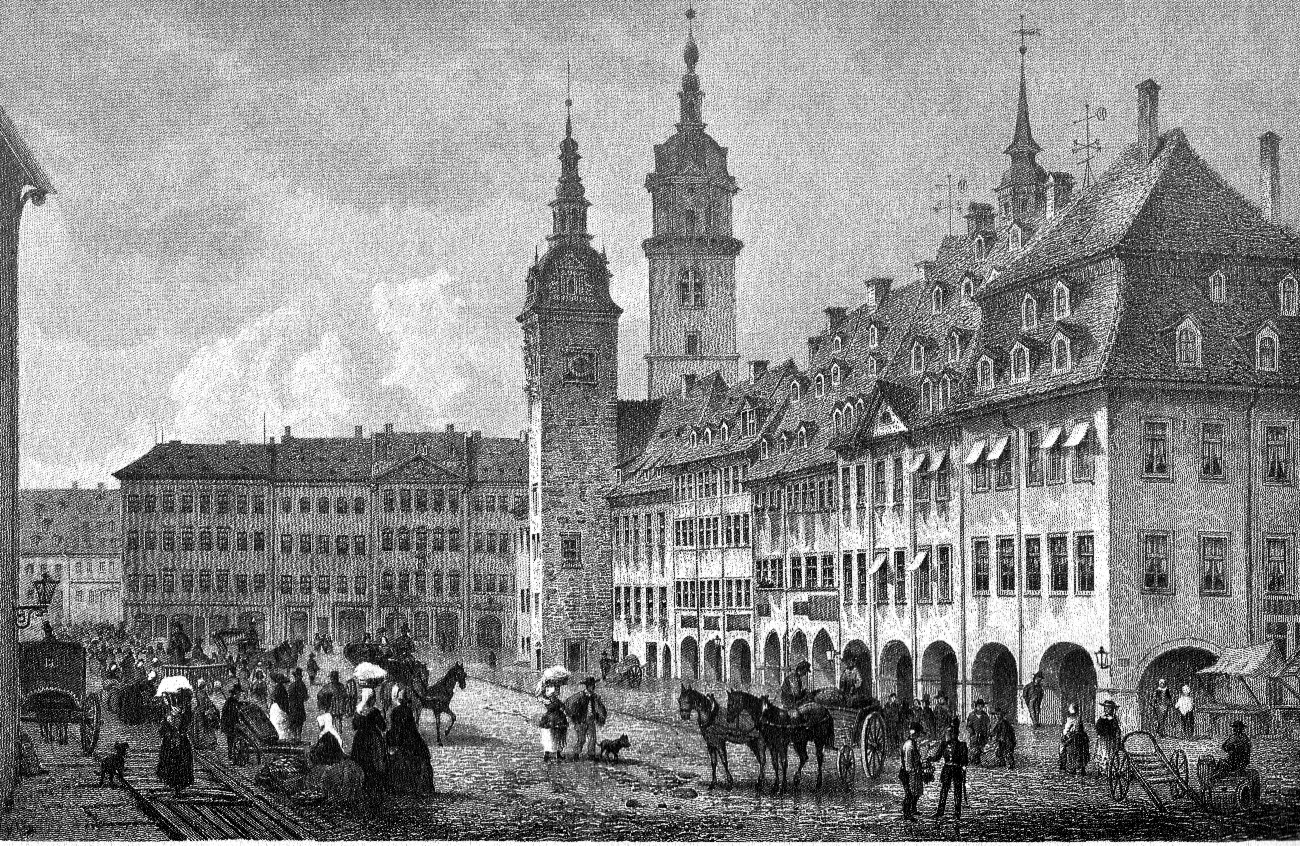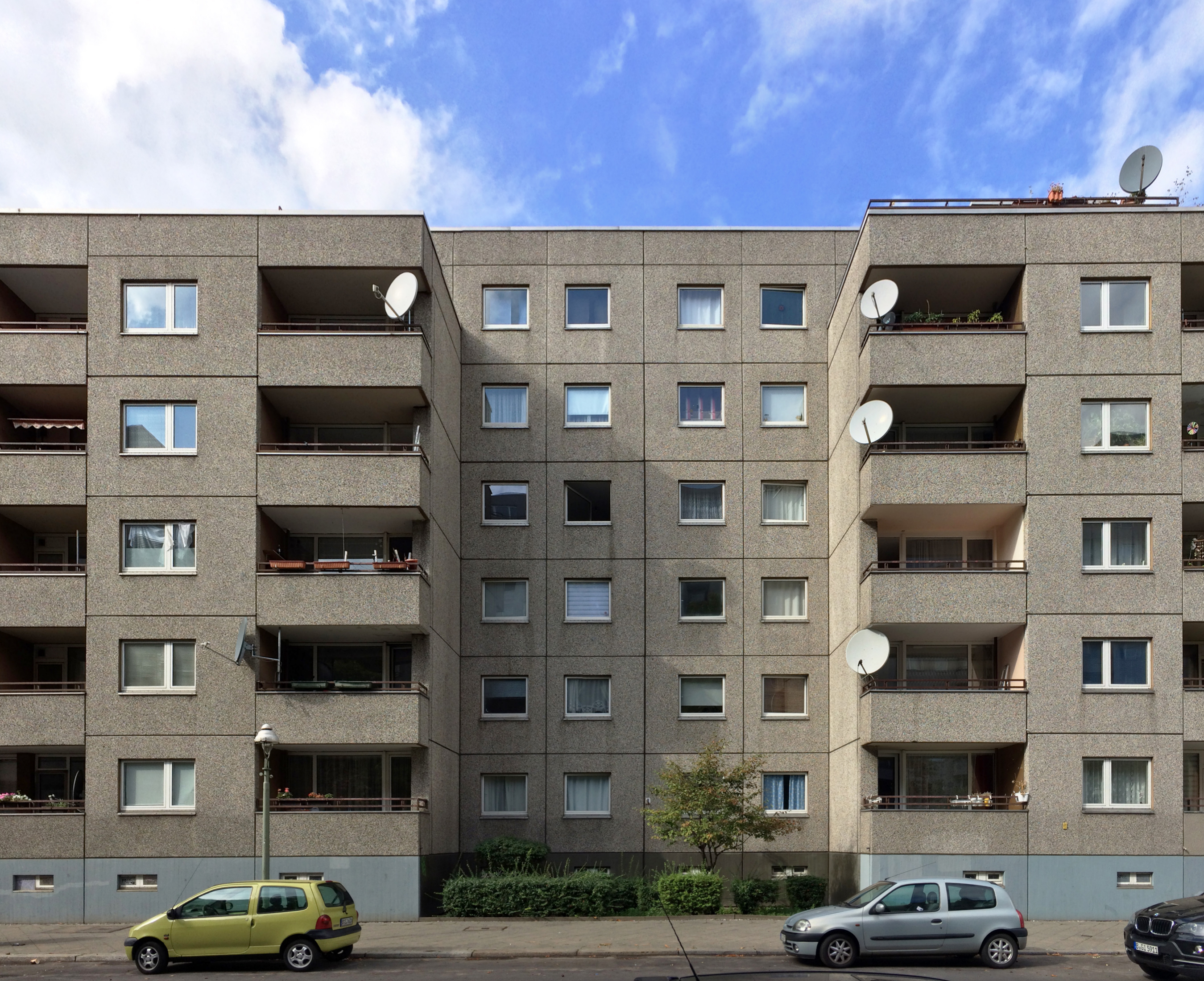|
Chemnitz-Gablenz
Gablenz is a neighborhood in the southeastern part of the German city of Chemnitz in the state of Saxony. Geographical Location Bordering neighborhoods are, clockwise starting from the north, Yorckgebiet, Adelsberg, Bernsdorf, Lutherviertel, and Sonnenberg. History The former village of farmers, Gablenz, was originally mentioned in the census register of the Benedictine Monastery of Chemnitz in the year 1200 (as ''Gabilencia''). It gets its name from the nearby creek with the same name, which flows through the area. The name is Slavic in origin and means "Apple Tree Creek.“ Gablenz became a part of the city of Chemnitz in the year 1888. Gablenz Creek flows at what is today ''Rochlitzer Street'' into Chemnitz River beneath ground. Old Waldhufendorf once stretched from ''Johannisvorstadt'' in the west of the city over to ''Euba'' in the east. To the north, Gablenz bordered the ''Zeisigwald'' Forest (known today as Yorckgebiet), to the north-east to ''Sonnenberg''. In the ... [...More Info...] [...Related Items...] OR: [Wikipedia] [Google] [Baidu] |
Chemnitz
Chemnitz (; from 1953 to 1990: Karl-Marx-Stadt , ) is the third-largest city in the German state of Saxony after Leipzig and Dresden. It is the 28th largest city of Germany as well as the fourth largest city in the area of former East Germany after ( East) Berlin, Leipzig and Dresden. The city is part of the Central German Metropolitan Region, and lies in the middle of a string of cities sitting in the densely populated northern foreland of the Elster and Ore Mountains, stretching from Plauen in the southwest via Zwickau, Chemnitz and Freiberg to Dresden in the northeast. Located in the Ore Mountain Basin, the city is surrounded by the Ore Mountains to the south and the Central Saxon Hill Country to the north. The city stands on the Chemnitz River (progression: ), which is formed through the confluence of the rivers Zwönitz and Würschnitz in the borough of Altchemnitz. The name of the city as well as the names of the rivers are of Slavic origin. Chemnitz is t ... [...More Info...] [...Related Items...] OR: [Wikipedia] [Google] [Baidu] |
Trams In Chemnitz
The Chemnitz tramway network (german: Straßenbahnnetz Chemnitz) is a network of tramways forming the centrepiece of the public transport system in Chemnitz, a city in the federal state of Saxony, Germany. Opened in 1880 as a horsecar system, the network was converted to an electrically powered system between 1893 and 1898. The network's gauge, originally , was widened to by the outbreak of World War I. From the 1950s, the gauge was widened further, to , although the gauge conversion work was not completed until as late as 1988. The infrastructure is currently operated by the (CVAG), and services are operated by them and City-Bahn Chemnitz. The system is integrated in the Verkehrsverbund Mittelsachsen (VMS). The city used Czechoslovak Tatra T3 trams (''Tatra T3D'' and ''Tatra B3D'') from 1969 until they were all decommissioned by 2019. Some were sold to Kazakhstan and Russia. In 1993, the city began using Stadler Variobahn, originally built by ABB (ASEA Brown Bo ... [...More Info...] [...Related Items...] OR: [Wikipedia] [Google] [Baidu] |
Saxony
Saxony (german: Sachsen ; Upper Saxon: ''Saggsn''; hsb, Sakska), officially the Free State of Saxony (german: Freistaat Sachsen, links=no ; Upper Saxon: ''Freischdaad Saggsn''; hsb, Swobodny stat Sakska, links=no), is a landlocked state of Germany, bordering the states of Brandenburg, Saxony-Anhalt, Thuringia, Bavaria, as well as the countries of Poland and the Czech Republic. Its capital is Dresden, and its largest city is Leipzig. Saxony is the tenth largest of Germany's sixteen states, with an area of , and the sixth most populous, with more than 4 million inhabitants. The term Saxony has been in use for more than a millennium. It was used for the medieval Duchy of Saxony, the Electorate of Saxony of the Holy Roman Empire, the Kingdom of Saxony, and twice for a republic. The first Free State of Saxony was established in 1918 as a constituent state of the Weimar Republic. After World War II, it was under Soviet occupation before it became part of the communist East ... [...More Info...] [...Related Items...] OR: [Wikipedia] [Google] [Baidu] |
Slavic Languages
The Slavic languages, also known as the Slavonic languages, are Indo-European languages spoken primarily by the Slavs, Slavic peoples and their descendants. They are thought to descend from a proto-language called Proto-Slavic language, Proto-Slavic, spoken during the Early Middle Ages, which in turn is thought to have descended from the earlier Proto-Balto-Slavic language, linking the Slavic languages to the Baltic languages in a Balto-Slavic languages, Balto-Slavic group within the Indo-European family. The Slavic languages are conventionally (that is, also on the basis of extralinguistic features) divided into three subgroups: East Slavic languages, East, South Slavic languages, South, and West Slavic languages, West, which together constitute more than 20 languages. Of these, 10 have at least one million speakers and official status as the national languages of the countries in which they are predominantly spoken: Russian language, Russian, Belarusian language, Belarusian ... [...More Info...] [...Related Items...] OR: [Wikipedia] [Google] [Baidu] |
Chemnitz (river)
The Chemnitz is a river in Saxony, Germany, a right tributary of the Zwickauer Mulde. It gave name to the city of Chemnitz, where it is formed by the smaller rivers Zwönitz and Würschnitz. It joins the Zwickauer Mulde near Wechselburg, south of Rochlitz and has a total length of . Gallery File:Chemnitzfluss in Schweizerthal (1).JPG, Chemnitz river at Schweizerthal in March 2016 File:Bundesarchiv Bild 102-12903, Sachsen, Hochwasser.jpg, Flood of the Chemnitz in Chemnitz-Furth, January 1932 File:Muldentalbahn bei Chemnitzmündung.JPG, Mouth of the Chemnitz near the bridge Muldentalbahn at Wechselburg in May 2016 See also *List of rivers of Saxony A ''list'' is any set of items in a row. List or lists may also refer to: People * List (surname) Organizations * List College, an undergraduate division of the Jewish Theological Seminary of America * SC Germania List, German rugby union ... Rivers of Saxony Chemnitz Rivers of Germany {{Saxony-river-stu ... [...More Info...] [...Related Items...] OR: [Wikipedia] [Google] [Baidu] |
Waldhufendorf
The ''Waldhufendorf'' ("forest village"; plural: -''dörfer'') is a form of rural settlement established in areas of forest clearing with the farms arranged in a series along a road or stream, like beads on a chain.Dickinson, Robert E (1964). ''Germany: A regional and economic geography'' (2nd ed.). London: Methuen, p. 142. . It is typical of the forests of central Germany and is a type of ''Reihendorf'', in which each farmstead usually has two wide strips of land adjacent to the farmhouse. History This type of settlement appeared around 1000 A.D. in the hitherto unpopulated northern Black Forest in Germany. On the generally higher, fertile, rounded summits (''Kuppen'') of upper Bunter sandstone, the farmsteads (known as ''Gehöfte'', ''Hufe'' or ''Hube'') were laid out along a road through the clearing. A Frankish Hufe (''Fränkische Hufe'') came to mean a farm holding, in area. The strips of land behind the buildings ran roughly at right angles to the axis of the village u ... [...More Info...] [...Related Items...] OR: [Wikipedia] [Google] [Baidu] |
Thirty Years' War
The Thirty Years' War was one of the longest and most destructive conflicts in European history, lasting from 1618 to 1648. Fought primarily in Central Europe, an estimated 4.5 to 8 million soldiers and civilians died as a result of battle, famine, and disease, while some areas of what is now modern Germany experienced population declines of over 50%. Related conflicts include the Eighty Years' War, the War of the Mantuan Succession, the Franco-Spanish War, and the Portuguese Restoration War. Until the 20th century, historians generally viewed it as a continuation of the religious struggle initiated by the 16th-century Reformation within the Holy Roman Empire. The 1555 Peace of Augsburg attempted to resolve this by dividing the Empire into Lutheran and Catholic states, but over the next 50 years the expansion of Protestantism beyond these boundaries destabilised the settlement. While most modern commentators accept differences over religion and Imperial authority were ... [...More Info...] [...Related Items...] OR: [Wikipedia] [Google] [Baidu] |
Plattenbau
(plural: , german: Platte + Bau, lit=panel/slab' + 'building/ construction) is a building constructed of large, prefabricated concrete slabs. The word is a compound of (in this context: panel) and (building). Such buildings are often found in housing development areas. Although are often considered to be typical of East Germany, the prefabricated construction method was used extensively in West Germany and elsewhere, particularly in public housing (see tower block). In English the building method is also called large panel system-building, shortened "LPS". History Prefabrication was pioneered in the Netherlands following World War I, based on construction methods developed in the United States. The first German use of plattenbau construction is what is now known as the ''Splanemann-Siedlung'' in Berlin's Lichtenberg district, constructed in 1926–1930. These two- and three-storey apartment houses were assembled of locally cast slabs, inspired by the Dutch ''Betondorp'' ... [...More Info...] [...Related Items...] OR: [Wikipedia] [Google] [Baidu] |
Hans Beimler (communist)
Hans Beimler (2 July 1895 – 1 December 1936) was a trade unionist, Communist Party official, deputy in the 1933 Reichstag, an outspoken opponent of the Nazis and a volunteer in the international brigades fighting for the Spanish Republic. Early life Johannes Baptist Beimler was born on 2 July 1895 in Munich to Rosina Beimler, an unmarried cook and a farm worker. As a three-week-old infant, he was sent to the village of Waldthurn in the Oberpfalz region of Northeastern Bavaria to be raised by his maternal grandparents. His grandfather had a locksmith's business and Beimler followed the family tradition into this trade. In 1913 he joined the German Metal Workers Union (DMV). In 1914, he was conscripted and joined the Kaiserliche Marine serving on minesweepers and rising eventually to the rank of "Mate". In 1917 he was awarded the Iron Cross. In 1918 took part in the November Revolution at Cuxhaven. Returning to Munich, Beimler joined the Spartacus League and in the chaotic ... [...More Info...] [...Related Items...] OR: [Wikipedia] [Google] [Baidu] |



